Time for a few more gig photos from Allan and there’s still some more in the pipeline. Over to Allan for a brief introduction.
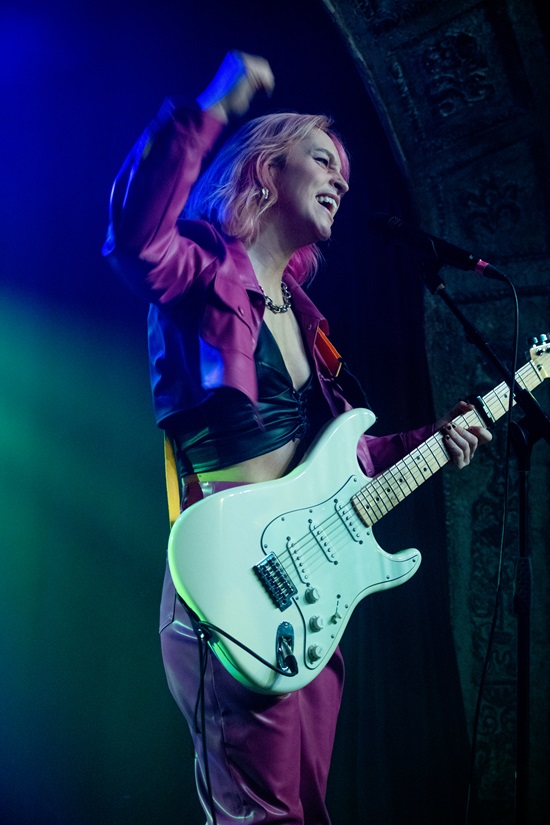
When I’m shooting gigs, my natural tendency is to try to get a portrait-like quality in the shots, to try to capture a moment, whether it’s animation or tranquility, that captures something of nature of the artist. Sometimes it’s an effort of will to take the wider view and capture something that says rock’n’roll and electric guitars playing way up loud I saw more bands than usual this year, in bigger venues, so here’s a tribute to the founders of the electric guitar tradition, Leo Fender and Les Paul.
Amber T
Amber T has been singing live since she was eight years old and started to release music when she was fifteen. She has a phenomenal voice, has been praised by Elton John and she’s sung live at Carrow Road before the Norwich and Stoke City game in September 2023. Not a bad cv even before you get to all of the single releases. Her singles are big productions but she can do the gentle acoustic guitar stuff as well. This shot was from her self-curated Galentine’s Night (I think that’s self-explanatory) at The Camden Club this year:
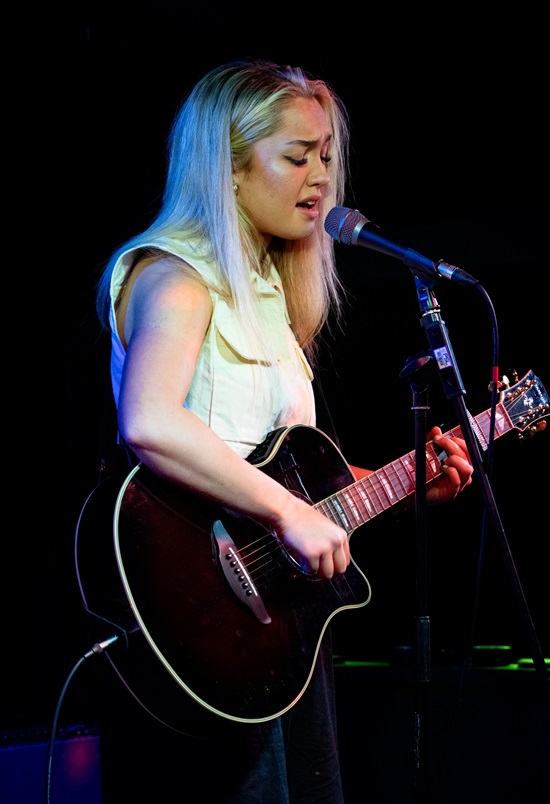
Nia Heart
If you want to hear grungy, loud guitar music, then the Hope and Anchor’s not a bad place to be. It’s full of echoes of bands that have played there over the last fifty years. Nia Heart came over from Cardiff to play her first ever band gig and, while it wasn’t slick and perfect, she played her set with a huge amount of energy and attack as this photo shows. I’m hoping for another chance to shoot them soon:
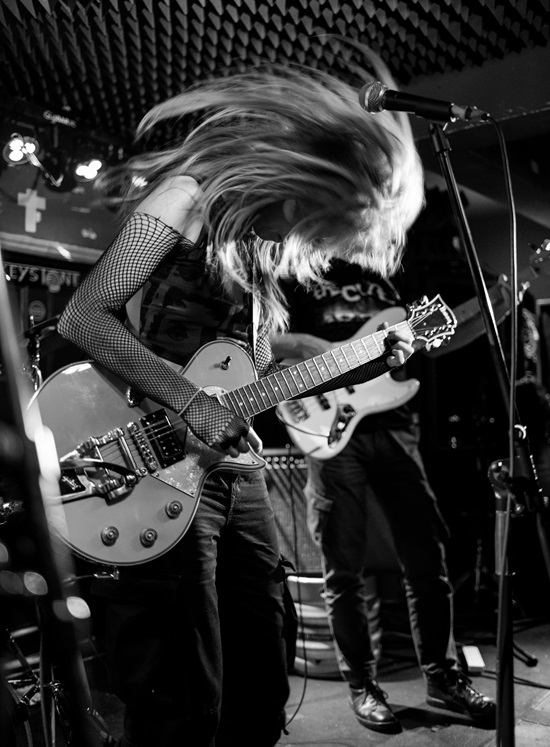
Emily Capell
The first time I photographed Emily was at The Isle of Wight Festival in 2017. It was obvious she was a highly individual talent with musical influences ranging from doo-wop to punk and a visual style influenced by either the B52s or the sixties stylings they adopted. It all adds to the eclecticism of her performance. Emily’s very engaging on and off stage and she was an inspired opening act for Stone Foundation at the end of their 25th anniversary tour at Islington Assembly Hall. She gained a few fans over those two nights and was really nice about some of my photos. I’ll take that any time:
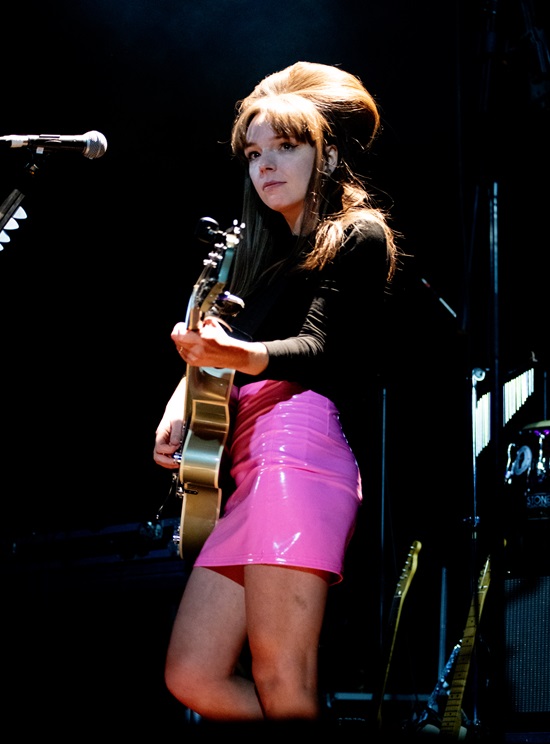
My subconscious must have been working overtime when I compiled these shots because I first saw Sam at The Isle of Wight in 2017 when he was playing bass with Elle Exxe’s band. Since then, our paths have crossed and recrossed. The strangest was when he was playing with Belle Roscoe on a narrowboat in Hackney Wick at the start of a guerilla canal tour. When I see him at gigs now, it’s never a surprise. Earlier this year, he was playing bass for Levina at Water Rats. Getting good bass player shots can be a challenge because of the length of the neck (on the bass, not the player). Sam helpfully plays with the bass neck angled up to make the framing easier. He’s that kind of guy:
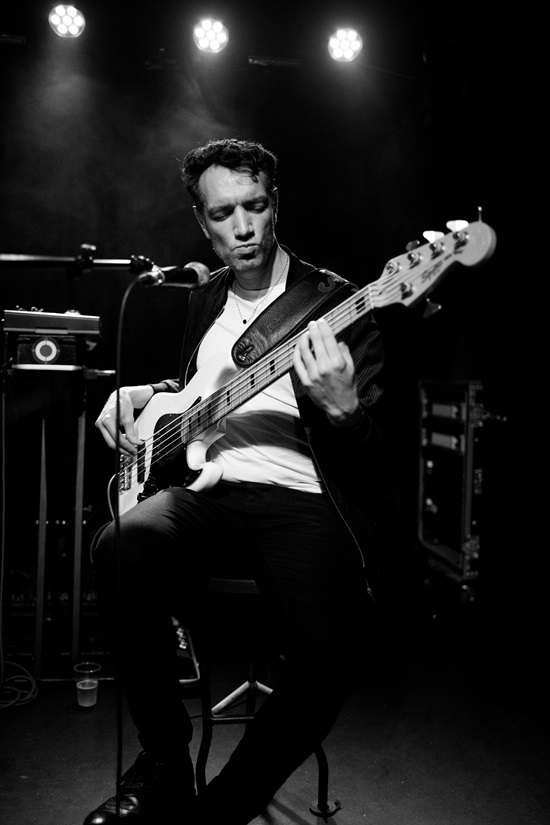
Beth McCarthy
This was shot at a gig where Beth supported Natalie Shay at Omeara in March. She’s a natural performer who keeps photographers on their toes as she moves constantly around the stage. She throws some fabulous shapes but you have to catch them quickly before zooms into the next one and the next one as her lyrics explore her evolving sexuality. Everything moves very quickly so you have to be on the ball and keep the shutter firing so you don’t miss anything:

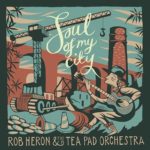 First impressions; sometimes you can stake your life on them and sometimes… Well, this was one of those. The opening song, “Let’s Go Back in Time, Man”, screamed out ‘Rockabilly Revival – again’, and we’ve all seen too many of those built around mediocre pop bands. But the album’s twelve songs long, so let’s not be too hasty. Guess what? By the second song I’d admitted to being a bit premature and by the end of the album, the message had hit home; the title of the first song’s ironic and this is about viewing a mid-twentieth century musical phenomenon through a twenty-first century lens. Forget the revival, this is how Rob’s rockabilly rolls in 2019.
First impressions; sometimes you can stake your life on them and sometimes… Well, this was one of those. The opening song, “Let’s Go Back in Time, Man”, screamed out ‘Rockabilly Revival – again’, and we’ve all seen too many of those built around mediocre pop bands. But the album’s twelve songs long, so let’s not be too hasty. Guess what? By the second song I’d admitted to being a bit premature and by the end of the album, the message had hit home; the title of the first song’s ironic and this is about viewing a mid-twentieth century musical phenomenon through a twenty-first century lens. Forget the revival, this is how Rob’s rockabilly rolls in 2019.
Now, with the best will in the world, some of the original UK rockabilly bands were characterised more by enthusiasm than expertise; that’s definitely not the case with Rob Heron and the Tea Pad Orchestra. These people can play and what they are is much, much more than a skiffle band with better gear. And maybe rockabilly isn’t really a wide enough description for the scope of their work. Just look at all the incongruous elements.
The second song, “There’s a Hole Where my Pocket Used to Be” combines a Spaghetti Western ambience and choral refrain with a Theremin and a clever lyric built around the number six. Don’t look for too many predictable where Rob Heron’s concerned. Song number three, “Life is a Drag”, combines lyrics about the joys of cross-dressing with a jazz arrangement, an accordion solo and lead guitar that wouldn’t sound out of place on a Les Paul record. And so it goes on – “Une Bouteille de Beaujolais” evokes a Paris café with an accordion solo, a gypsy Django feel and wine references. You wouldn’t find either of those two songs in a Crazy Cavan set.
That’s not the end of the invention by a long way. “Fool Talkin’ Man” has a Gallic Jacques Brel feel with some atonal touches creating a slightly menacing feel while the title song has the feel of a seventies American TV theme married to a lyric about unwanted gentrification in our cities. And even if the album’s closer, “Double Meaning, Double Entendre”, is based on a fairly thin premise, it’s still good fun and there’s always a place for that. Give it a listen; even better, go out and watch them on their upcoming tour.
“Soul of My City” is released on Tea Pad Recordings (TPCD006) on Friday February 1st, 2019.
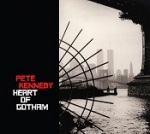 Let’s just say this really quickly and get it out of the way. “Heart of Gotham” is a truly exceptional and accomplished album. It’s a genuine labour of love, put together over a period of about ten years by Pete Kennedy when he wasn’t touring with his wife Maura as The Kennedys, producing albums for The Kennedys and Maura as a solo artist, and touring with Maura in Nanci Griffith’s Blue Moon Orchestra. This is the work of an enormously talented musician which taps in to Pete’s knowledge of musical and cultural history and the history of New York City itself.
Let’s just say this really quickly and get it out of the way. “Heart of Gotham” is a truly exceptional and accomplished album. It’s a genuine labour of love, put together over a period of about ten years by Pete Kennedy when he wasn’t touring with his wife Maura as The Kennedys, producing albums for The Kennedys and Maura as a solo artist, and touring with Maura in Nanci Griffith’s Blue Moon Orchestra. This is the work of an enormously talented musician which taps in to Pete’s knowledge of musical and cultural history and the history of New York City itself.
“Heart of Gotham” is more than just a concept album, it’s a song cycle. It starts and ends in Union Square in the morning and there are elements and themes which recur as Pete declares his love for his city. You can play the album, let it wash over you and just enjoy the outrageously good playing and melodies, but you’ll be missing out if you do, because there are carefully-crafted references in the lyrics that add layers to the meaning of the songs. There’s a strong autobiographical strand running through the piece with references not only to Pete’s life, but also the lives of his ancestors, who came to America as migrants (or possibly more accurately as refugees) from Ireland and helped to build the city.
The album opens with “Union Square”, layers of chiming and shimmering guitars and Pete’s rasping voice setting the scene for the album while reeling off a hugely evocative list of real and fictional characters. It’s a stunning opening to the album with a widescreen feel which hints at early Springsteen and really should be a radio track. “The Bells Rang” is, not surprisingly, a celebratory song. There’s no explicit reference to the subject of the celebration, but references to Sojourner Truth, Martin Luther King and ‘the rising son’, suggest the election of Barack Obama in 2008. It’s warm and it’s tremendously uplifting. “Williamsburg Bridge” is partly autobiographical, linking the present to the past and referencing Robert Moses, the architect of much of New York’s landscape; it’s a love song to a partner and to the city.
“Never Stopped Believin’” is part autobiography/part musical manifesto set to a gentle finger-picked guitar backing, while the folky “Unbreakable” again links present to past, this time using Pete’s ancestors and their companions who physically shaped the city. “Rise Above” contrasts a slightly gloomy verse with a lovely harmony-rich chorus, while the mandolin-driven “People Like Me” celebrates the outsiders who can live, thrive and even find each other in the big city. “Harken” contrasts the jangling Roger McGuinn-like guitar with alienation which is an inevitable part of life in a big city while “Asphodel” blends Buddy Holly with Blondie and is packed with literary references delivered at the top of Pete’s tenor range.
“Riot in Bushwick” is the song where Pete finally cuts loose as a guitar player, paying homage to the early electric players like Les Paul and Charlie Christian and it sits somewhere between jazz and early rock ‘n’ roll. The lyrics are humorous, but it’s all about the guitar; Pete plays more inventive fills in this one song than most players can manage in an entire album, and it’s great fun. “New York” looks at the flipside of alienation in the city, a feeling that the city itself, and the people in it can be a healing force, again with a hint of Byrds guitar before we approach the end of the cycle.
Both “Gotham Serenade” and “Union Square (reprise)” explore different facets of the album’s opening track. “Gotham Serenade” opens with some guitar feedback creating a Celtic drone and adds verses which take us into the night in the city, with an extended guitar solo that’s just gorgeous as the second half of the song, and the album closes with a stripped-down reprise of the opening song set at dawn again, but this time it’s the end of the day, and the cycle’s just about to start again.
“Heart of Gotham” is an album you can listen to again and again, and each time you’ll hear something new. Pete Kennedy is a musician, a poet, a philosopher and a scholar who has woven all of those strands into this magnificent creation which evokes the history and soul of New York through its places, its people and its culture. At a time when music is seen by a whole generation as disposable and is often devoid of creativity, Pete has created a work that overflows with ideas (musical and lyrical) and is intensely moving. This is essential listening.
Out on October 16. Available from The Kennedys website.
Ok, has this happened to any of you recently? You turn up to a gig to see a band that you really like. You know that there’s a support band and you’ve checked them out online. The videos on YouTube are dire but what do you expect? The lens on the cameraphone has been rubbed up against the greasy pocket lining of someone’s unwashed 501s for several months and the microphone’s about the size of a pinhead. And they keep waving the damn thing around. Come to think of it, it’s really annoying when you’re at a gig as well; why don’t you just put the camera away and enjoy the gig?
Where were we? Oh yeah, support bands. So you get to the gig and find out that there’s an extra support band. It’s great for the venue because the punter thinks they’re getting something extra. The only thing Milton Friedman ever said that I agree with is “There’s no such thing as a free lunch”; it’s particularly true here. You know why those extra bands are there, don’t you? They’re either playing for nothing, or, even worse, they’re paying to get the gig. Why would they do that? They do it because they’re desperate to be on stage; they’re the same kind of delusional wannabes that live music fans get so smug about when they talk about X Factor and Britain’s Got Talent. They do it for nothing because they aren’t good enough to get paid for it.
So why do venues put on crap bands; that doesn’t make any sense, does it? Well, people don’t get that delusional without an extensive support network and all the family and friends who are bigging them up will go along to watch them. Admit it, it sounds cool at work to say “I went to watch my mate’s band last night”, doesn’t it? Next time someone says that to you make them squirm by asking if they were any good and watch them check who can hear before they answer. Anyway, to get back to the point, the venues get all of these hangers-on coming along to support their mates. They make the gig look busy and, more importantly, they buy drinks at the bar; makes sense now doesn’t it?
And these bands come in different flavours as well. I’ll give you two for starters. How about a young, good-looking (male or female) leader who couldn’t carry a tune in a rucksack, surrounded by reasonably good musicians who should know better? They sound great until the lead vocal comes in with all the sonic beauty of polystyrene being scraped down a patio door. It’s even more worrying when you know that you’re going to get a brave but foolhardy attempt at vocal harmonies from the rest of the band when you reach the chorus. But at least they’re young and they’ll probably grow out of it.
What’s even worse is the band made up of middle-aged men who are lawyers or bankers or middle managers who have enough money to buy really good kit and enough time on their hands to meet up to practise blues standards once a month. They wanted to be rock stars when they were young but they weren’t good enough. Guess what guys; a Les Paul and a Marshall stack with a dozen stomp-boxes and a pair of tastefully ripped jeans doesn’t change that. But they bring the entourage along with them and they all get enthusiastic and cheer and whoop for their band. And that’s another thing, this rent-a-mob only listen to their band. As soon as their (hopefully short) set finishes they either ignore the rest of the bands or try to out-shout them.
And they get away with this because we’re all too polite. We clap at the end of each song that they’ve ritually disembowelled instead of showing how we really feel. That’s the mistake we make; these people have the hide of a titanium-plated rhinoceros and absolutely no self-awareness; the only way to make them stop is extensive and repeated humiliation. Next time you see one of these bands and their posse of braying followers, boo them, hiss at them, wince visibly when they play or sing out of tune, turn your back on them, go to the toilet but, whatever you do, don’t encourage them. Go on, you know you want to.


